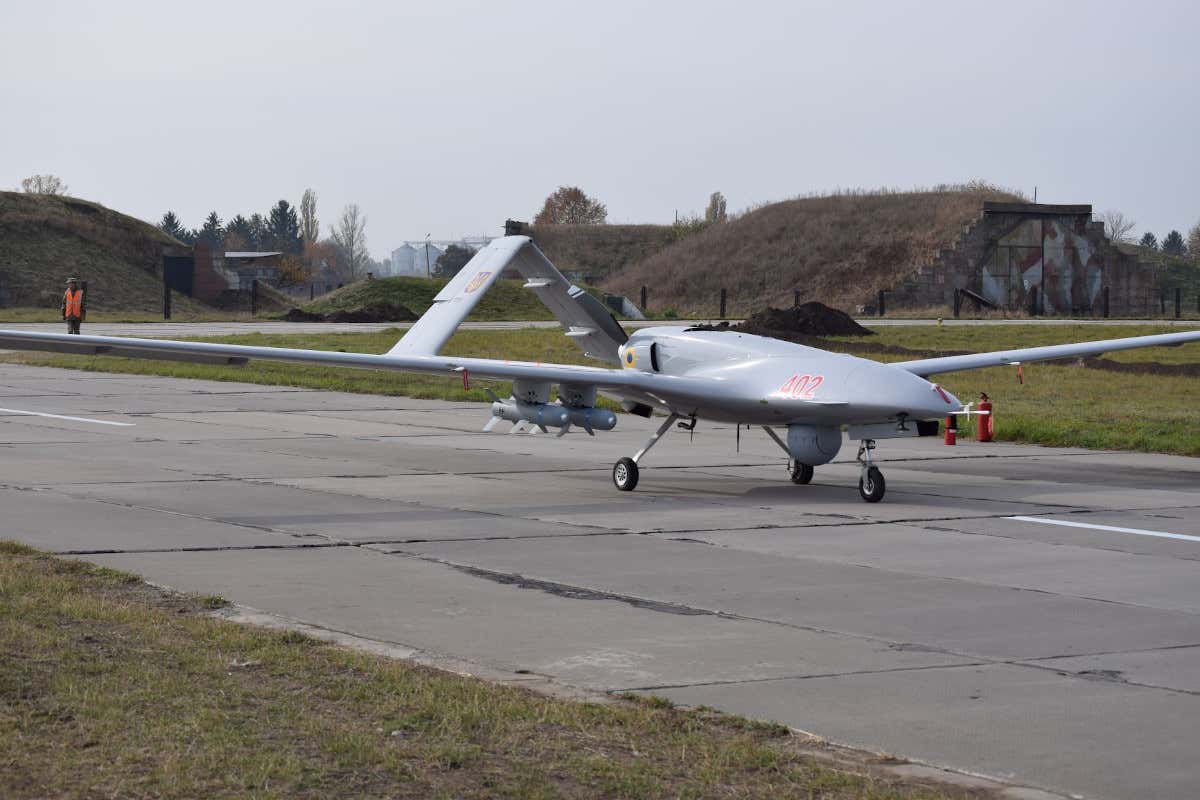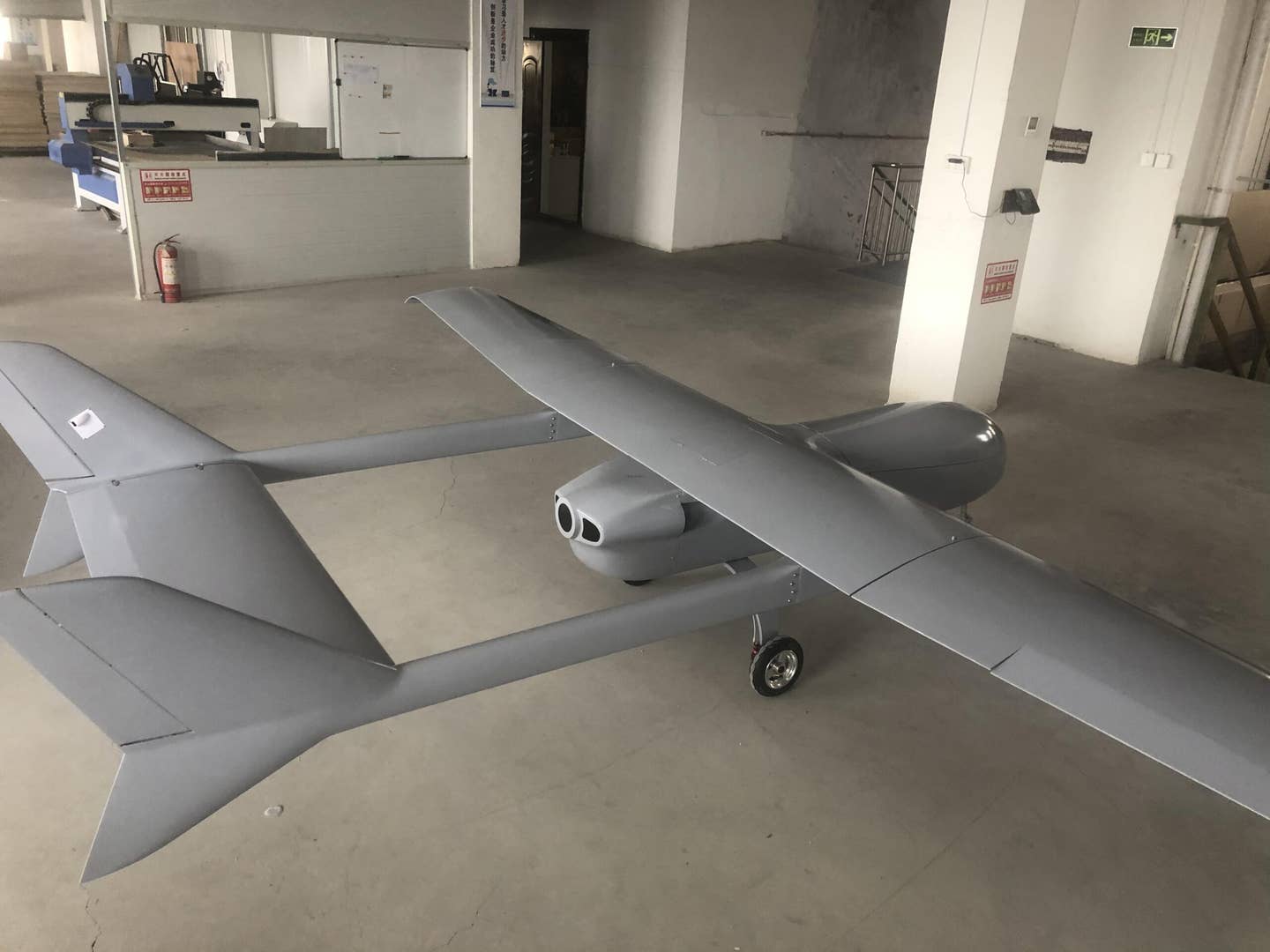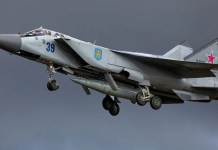A Russian oil refinery in Rostov, situated five miles from Russia’s border with Ukraine, was the target of what appears to be a drone attack by Ukrainian forces.
‘Nuclear Ashes’: Russia’s ‘Satan Missile’ Is Ready For Deployment; Moscow Says Can Wipe Out Entire US East Coast
The dramatic video from the Rostov region shows a claimed drone attack by Ukrainian forces. The video clearly illustrates a drone flying meters over a structure before taking a sharp turn and gliding towards the Noboshakhtinsk oil plant.
Footage of the incident reportedly originally appeared on the Telegram messaging application on the morning of June 22 before spreading extensively across other social media networks.
The video documents a conversation between two men on the ground. One of the men speculates that the drone might be Ukrainian. Later, a radio transmitter hears a different voice, stating, “The refinery has been hit. Drone dived and hit the target.”
Russian media sharing this video of drone that hit the refinery.
Workers "wow, drone. Is it Ukrainian? – Of course not! BOOM" pic.twitter.com/XnwoMJ3eYm
— Liveuamap (@Liveuamap) June 22, 2022
Subsequent videos show thick black smoke emerging from the refinery’s impact site and firefighters directing their hoses at the flames.
In a statement, the refinery said: “As a result of terrorist actions from the Western border of the Rostov region, two unmanned aerial vehicles struck at the technological facilities of Novoshakhtinsk.”
Vasily Golubev, the governor of the Rostov region of Russia, also verified the event by stating that two drone fragments were discovered at the refinery, and no one was harmed.
According to the Novoshakhtinsk oil refinery, the first drone attack on the complex happened at 8:40 am local time, striking a crude distillation and lighting a fire. The second drone attacked at 9:23 am local time and was targeted at crude-oil reservoirs.
Since the start of the war, the Ukrainian military has allegedly launched multiple attacks on Russian territory. In April, the governor of Belgorod alleged that President Zelesnky’s forces attacked oil storage on Russian soil.
Oleksandr Motuzyanyk, a spokesman for the Ukrainian Defense Ministry, did not confirm nor deny that Ukraine was involved in the attack. Motuzyanyk said: “Ukraine has been defending itself to resist aggression.
“It does not mean that Ukraine has to bear responsibility for all those catastrophes and events that happen on the territory of the Russian Federation,” he said.
Which Drone Was Used In The Attack?
The drone that was used in the attack is still unidentified. However, the twin-boom design and the sweeping vertical fins at the ends of the tailplane are distinguishing characteristics.
The Bayraktar TB2 is also a twin-boom type operated by Ukraine and manufactured in Turkey. However, there are some differences. The drone involved in the Novoshakhtinsk incident is smaller, doesn’t have an elliptical-shaped, streamlined fuselage, and lacks the curved intersection where the body meets the wing’s leading edge.

It has also been suggested that it might have been a PD-1, PD-2, or modified version of one of those drones produced in Ukraine. But like TB2, its appearance differs from what is shown in the video.
Some accounts also alleged it to be a Russian-made Forpost, suggesting that Ukraine may have captured one of these and modified it for an attack within Russian territory.
Also, there is no information to suggest that Ukraine has acquired any drones from a Western source that even remotely resemble the vehicle experts witnessed in the video.
There have also been suspicions that the drone in the video might be a commercial piece, possibly the Skyeye 5000mm from the Chinese Alibaba website. Ukrainian experts may have modified it for a “kamikaze” mission.

Notably, the Skyeye drone’s tail fins match the drone’s design in the video. On the Alibaba website, drones can be purchased for between $5,000 and $10,000. This approach would be considerably less expensive, easier, and offer a higher level of deniability than buying and using precision-guided weapons that are already in existence.
Meanwhile, images purportedly showing the debris of at least one drone near the refinery have surfaced. However, these fragments are too small to offer many hints about the drone’s identity.
If a Ukrainian “kamikaze” drone was genuinely used in this attack, it shows a substantial improvement in the capacity to strike targets inside Russian territory.
Failure Of Russian Defense Systems?
The failure of the Russian air defenses in the region to defend against the latest attack raises new concerns about their capability. The drones travel at very low speeds and altitudes. As a result, safeguarding against such attacks is difficult.
Modern air defense systems are not designed to address these threats, as Saudi Arabia and other nations discovered to their detriment. For example, Iran and its allies have attacked Saudi oil facilities with drones and missiles, with occasionally catastrophic repercussions.
Several Russian provinces have been attacked around the Ukrainian border in recent months, including on-air bases and ammunition storage locations.
Nevertheless, there is no solid evidence that this was a Ukrainian air raid, and Ukrainian officials have also refused to comment on reports that their forces were involved directly.
- Contact the author at ashishmichel@gmail.com
- Follow EurAsian Times on Google News





